Sunday- Rarangi Beach
Monday-Blenheim Wineries and Gardens
Tuesday-Totaranui and Abel Tasman Nat’l Park
Wednesday-Birds of Abel Tasman
Thursday- Nelson, New Zealand
Friday- Picton and the Marlborough Sounds
Saturday-Native Plants of New Zealand
The wild and wonderful plants of New Zealand
So many plants, exotic and commonplace, native to NZ and native to California! First of all you slowly get used to all the different, and I mean Maori names, of the plants of New Zealand. Maori are the native people there and there is a Maori name for most plants here, as well as the common and Latin name.
I love plants names …need to know what each plant is,…Latin and all and I must have asked my sister 10 times what certain plants were, due to my failing memory. I admire her, who has embraced all the native plants and learned their characteristics, using them in all her gardens for the 12 years she has lived here.
I will only mention the ones that I thought were the most and best, resigned to knowing that none will grow where I live, but fascinating to have experienced on my trip. I’m happy to have seen how my sister has started her garden near the windy sandy beach and made it fit seamlessly into that wild place.
The plant that impresses the most, when you can see it in the wild in the NZ bush, is the mighty tall Silver Fern, Cyathea dealbata, icon of NZ. When you scan the forest and see huge ferns filling in layers of trees, searching for the sun, you think you may spot dinosaurs appearing, crashing out of the green curtain of slender trees and vines, like Jurassic Park.
Every surface of ground along the paths in the bush is covered in ferns and mosses.
The Crown Fern, Blechnum discolor, is a cutie with its ‘spinning top’ shaped korus.
Korus is the Maori name for fern fiddle necks and also a Kiwi icon found as pendants made of a wire spiral or carved in jade.
Manuka and Kanuka are in the tea tree family and found in gardens as well as in the wild here on the South Island. Manuka, Leptospermum scoparium , is the NZ tea tree we have in many places here in the US. Kanuka, Kunzea ericoides, is a more wild form , growing tall and slender in the bush of Abel Tasman National Park, but both varieties bloom profusely in the late spring and summer.
Cabbage tree, Cordyline australis, another NZ icon, can be seen everywhere in the US, but, oh, to see it in the wilds of New Zealand! And, hopefully you’ll see a Tui feeding there.
Ever heard of NZ Spinach? Tetragonia tetragonioides was grown and served by our Mom in her Southern California garden in the 1970’s, but neither of us like it, it’s a bit rubbery, contains oxalates which can cause kidney stones I found out, so we will leave it here on the beaches of Abel Tasman where it grows wild. New Zealand spinach is also used as a tough as boots groundcover and it seems snails and other insects don’t like it either.
Besides the native plants, there are the agricultural plants so important to the economy in the Marlborough Valley where I stayed this trip, the grapes and the fruit. There are more then fifty wineries here, so many that there is now an excess of wine (how can that be?) and the wineries are in crisis now like much of the world, with no buyers for their stock.
I was intrigued by how the apples were pruned in NZ, much like the grapevines are grown along a wire trellis, and kept tall and slender to expose the fruit to the most natural, unpolluted sunshine. New Zealand apple growers believe that the single most important factor in growing their quality apples is the pruning and shaping of the trees. This is something we, here in the Sierra Foothills, can easily do with our apple trees.
At a farmers’ market in Blenheim our eyes caught sight of the dramatic looking Cardoon flower, Cynara cardunculus, spiky and purple, at an olive oil booth and my sister picked one up at the next booth selling home grown nursery plants. The rest of the plant is wacky, growing just like the thistle weed it is, but six, seven feet tall. We planted it in one of her beds and I’ll be waiting to see what it does.
Lily of the Nile, Agapanthus, is obviously loved by New Zealanders. It’s planted along city streets and completely fills home landscapes, seeming to be the ‘go to’ plant when not knowing what else to plant. Its peak bloom time was during my visit and I nominate it as a Kiwi icon in itself.
The other most common plant you’ll see in NZ is the Flax, Phormium tenax, and all its cultivars, here used effectively in a garden, catching the early morning light.
Plants that can be used in the New Zealand garden by the sea are also ones that you see in the city centers and wild areas. “Tough as boots”, my sister says of these, Hebe, Olearia, Griselinia, Ribbonwood, Muehlenbeckia, and Manuka. Wind grasses and Libertia, and Flax, all are found on the berms she has built to block views of neighboring homes and to slow down the wind.
More maritime hardy plants:
Dodonaea viscosa
Coprosma acerosa Mangatangi
Daisy bush
Five finger
Hebes
Lancewood
Manuka
Mingimingi (sophora)
Ribbonwood
Olearia
Pittosporums
End note: In addition to all the plants mentioned I must include the invasive, or ‘introduced species I saw. Since NZ is an island, some plants and animals were brought by ship long ago and have made themselves a home much to Kiwis’ dismay.
CA poppies- can you believe that they are considered a nuisance? But, yes. They are all over the seaside and river edges here, adding a bit of California to the landscape.
Lupine- In New Zealand, where it is known as the Russell lupin, Lupinus polyphyllus is classed as an invasive. On the beach, a smaller form grows and is weeded out by restoration groups.
Borage, Borago officinalis, found here in lawns and on the beach, is used in companion planting and easily grown, sometimes invasive, from seed. It is also said to be a good companion plant to tomatoes because it confuses the search image of the mother moths of tomato hornworms looking for a place to lay their eggs! This unusually pretty annual is native to Europe and North Africa. It is so pretty it rightly belongs in the flower garden, also attracting bees.
Broom, or sweet broom, grows here in the fields and roadsides and is philosophically accepted. I have heard or read nothing to say they see it as a nuisance, unlike here in the mountains of CA, where you gasp in horror when you see it on your property.
California quail run all around the beaches and across the roads of the South Island, with tiny babies following as fast as their little legs can go. They seem to be adored, even by the Kiwis.
The End….now back to the foothills of California and reality. My garden needs work!

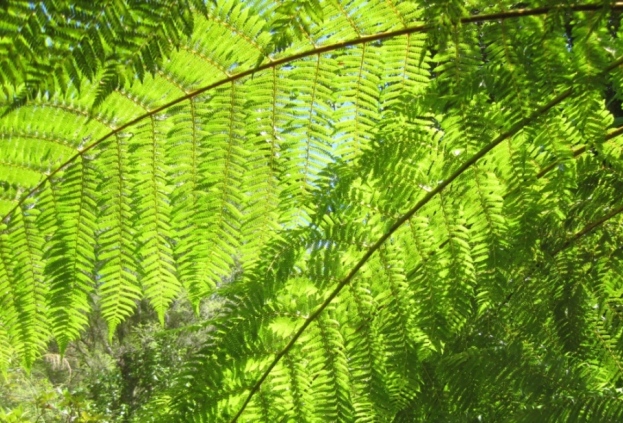
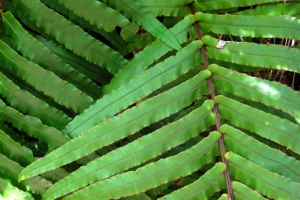
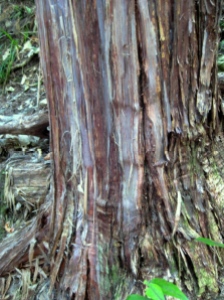
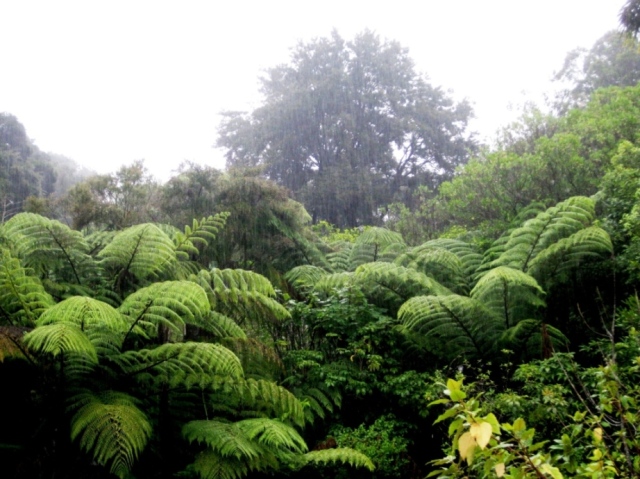
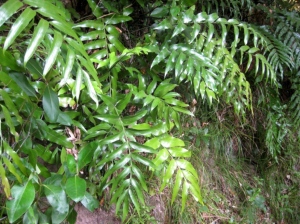

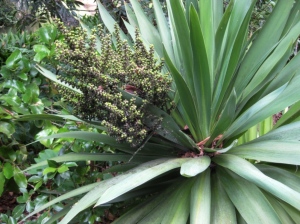


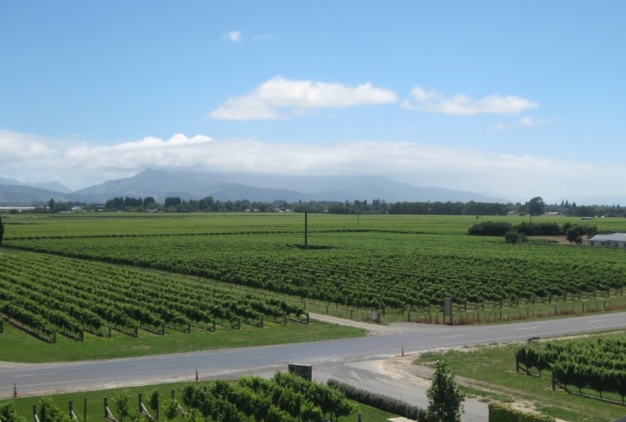

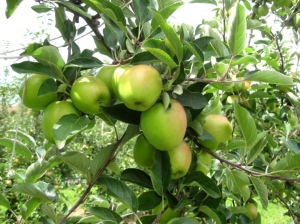
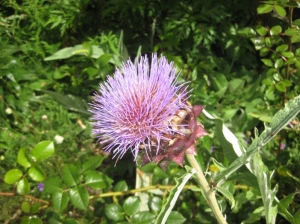


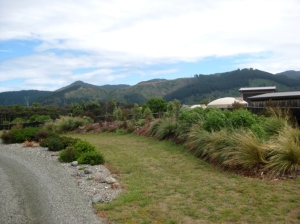

Pingback: Preparing for a trip to New Zealand | Sierra Foothill Garden